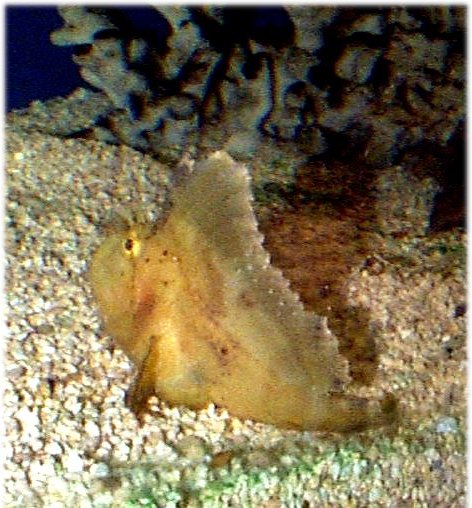Physical description:

Photo
courtesy of Phil Slosberg
-
Body length: 10 to 20 inches long
-
Weight: 1 to 5 lbs
-
Large head, mouth and jaws, tapering
to a small tail
-
Color: red, orange, yellow,
and black.
-
Dorsal, pelvic, and anal fins have
sharp spines with venom; venom glands lie alongside the spines.
-
Irregular surface and patchy colors
hide the fish's body contours and make it look like a patch of weed-covered
rock.
-
They crawl along the bottom of the
ocean, using their pectoral fins. Because of their relative inactivity
and effective camouflage, some are also called "stone fish."
|


